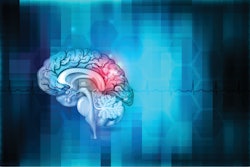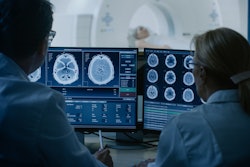A small study using functional MR imaging has found that people with exceptional memorization skills show increased activity in certain regions of the brain during their mental recall efforts.
Published online by Nature Neuroscience, the study compared winners of the annual World Memory Championships in London to average-memory control subjects. A series of intelligence tests found that the "superior memorizers" (SMs) didn’t possess an overall superior intellect that would explain their top performance.
The researchers also looked for differences in gray-matter volume between the two groups using whole-brain voxel-based morphometry (VBM) with optimized structural MR images. No important distinctions in brain structure were found.
"For structural brain analysis, VBM has many advantages over region of-interest (ROI) techniques in that it is automated rather than observer-based, and the whole brain is considered with no a priori regions of interest," the researchers stated (Nature Neuroscience, December 16, 2002).
"VBM is sensitive to structural hippocampal changes in clinical as well as nonclinical subjects," the authors wrote. "For example, structural differences between the hippocampi of London taxi drivers and the general population have been reported."
What the researchers did find when examining the memory champions was unusual brain activity that occurred as the memorizers employed their skills. To elicit this activity, imaging data was recorded as the study participants tried to memorize the content and order of a series of three-digit numbers -- a skill tested at the World Memory Championships.
To distinguish between differences in brain activity reflecting the underlying cognitive process, the subjects were also tested on their memory of faces and snowflakes.
"Our experimental design ensured a range of performance, from the SMs being much better than controls (digits) to both groups performing similarly (snowflakes)," the authors wrote. "Thus we could differentiate brain activity that covaried with performance from activity that was associated with the learning process itself (irrespective of the amount of material being learned)."
The group then compared the fMRI data gathered during these exercises and found two major sets of differences between the two groups: 1) that the superior memorizers showed more activity in brain areas such as the right cerebellum; and 2) that some areas showed threshold activity only in the SMs.
"Several brain regions were active in SMs for all stimulus types, irrespective of performance: left medial superior parietal gyrus, bilateral retrosplenial cortex, and right posterior hippocampus," the researchers wrote.
They attributed differences in brain activity to the SMs’ use of spatial mnemonic techniques, including the ancient method of loci.
"It is interesting to note that, although very proficient in the use of this spatial mnemonic, no structural brain changes were detected in the right posterior hippocampus of the SMs, as have been found in London taxi drivers," the authors wrote. "This may be because taxi drivers store a large and complex spatial representation of London, whereas the SMs use and re-use a more constrained set of routes."
"Our findings...indicate that fMRI could prove valuable in delineating the neural substrates of mnemonic techniques," they concluded. "This may extend the horizon for effective memory improvement in the general population and facilitate rational and focused rehabilitative interventions in patients."
By Tracie L. ThompsonAuntMinnie.com contributing writer
January 13, 2003
Related Reading
Adults with ADHD exhibit brain abnormalities on functional MRI, October 28, 2002
FDG-PET spies early decline in forgetful folks, October 22, 2002
Women, men use different parts of brain to remember, July 24, 2002
Copyright © 2003 AuntMinnie.com


.fFmgij6Hin.png?auto=compress%2Cformat&fit=crop&h=100&q=70&w=100)





.fFmgij6Hin.png?auto=compress%2Cformat&fit=crop&h=167&q=70&w=250)











